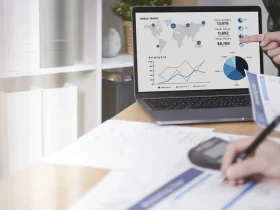Getting your product into retail stores is an important milestone for few businesses. It not only expands visibility but also builds believability and drives greater marketing. However, landing a spot on a shelf demands planning, composition, and steadfastness. Here’s a gradual guide about how to get your wholesale products in stores.
Step 1: Your Product Must be store-ready
Before nearing retailers, confirm your output is polished and appealing. This includes:
· Specialist Packaging:
Your design must be noticeable, teachable, and sturdy for store displays.
· Safety regulations:
Your product must meet the product safety guidelines.
· Proven Demand:
Retailers want confidence that your product sells. Use online businesses’ info, testimonials, or local display benefits as evidence.
Step 2: Research the Right Retailers
Not every store is the right fit. Identify retailers whose trial aligns following your product. For example, a basic skincare brand may focus on well-being stores and niche shops rather than prevailing supermarkets. Study their shelves to visualize place your produce would fit and by what method it can be conspicuous from rivals.
Step 3: Powerful Pitch Making
Retail buyers recognize numerous hints daily, so your pitch must capture their attention. Include:
· Product Story:
Share what makes your output unique and appealing to customers.
· Sales Data:
Demonstrate disagreement through online description, local events, or trade shows.
· Marketing Support:
Highlight how you’ll advance your output to help stage-store sales.
Step 4: Find a Perfect Buyer
Start following local or regional patrons before nearing big chains. You can:
- Attend professional shows and industry events to make links.
- Send samples with a short, professional product performance.
- Use online terraces where buyers expect new products.
Persistence is key—sometimes diversified follow-up boosts are necessary before taking a response.
Step 5: Negotiate Terms
If a dealer shows interest, be prepared to argue terms in the way of wholesale pricing, fee schedules, and return policies. Read the points below:
- All retailers expect a good margin.
- Be clear about order minimums and lead times.
Understand the designated fees or advertising requirements that a few big stores may charge.
Step 6: Deliver and Support
Once you secure shelf space, the whole thing doesn’t stop. You must ensure compatible delivery and support reductions through:
· Reliable Supply Chain:
Avoid stockouts by managing stock efficiently.
· In-Store Marketing:
Provide displays, signage, or samples by accident.
· Regular Communication:
Stay in touch, accompanying purchasers to restore relations and secure reorders.
Conclusion
Getting your product on retail shelves takes, in addition to just a great idea it demands a strategic approach, steadfastness, and the ability to determine value to retailers. By fitting thoroughly, building strong connections, and supporting your product in stores, you can turn your sales dream into a sustainable reality.












